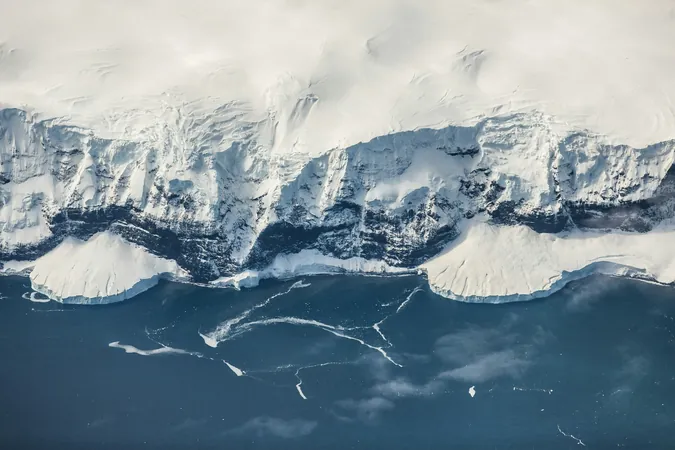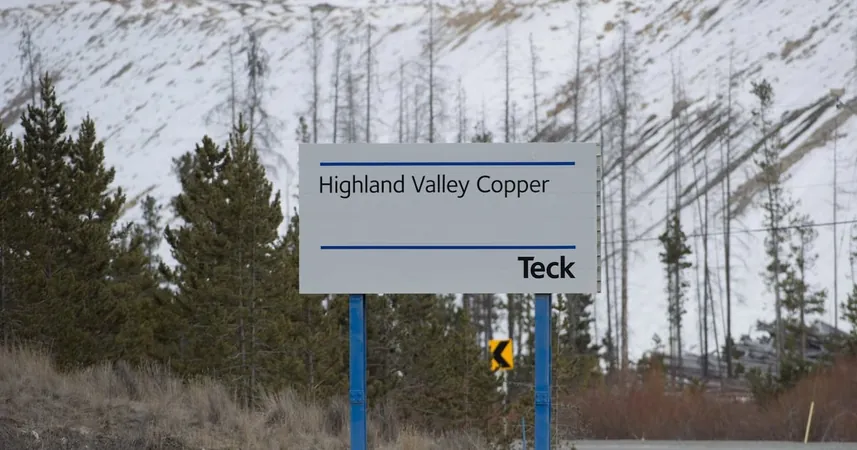
Unlocking Secrets of Ancient Ice Sheets: What They Reveal About Future Sea Level Rise
2025-06-23
Author: William
When you stroll along the picturesque Godrevy beach on the stunning north Cornish coast, your eyes might naturally be drawn to its iconic lighthouse, surfers catching the waves, and playful seals basking in the sun. However, the cliffs looming behind this idyllic scene hold a treasure trove of climate history that scientists desperately need to understand future sea level rises.
A short scramble up the slate rocks unveils a flat platform shaped by crashing waves over 100,000 years ago, revealing a cliff of sand and pebbles that tells a story of a shoreline that was once several meters higher than it stands today.
Similar raised beaches can be found dotting the Cornish coastline, from Bream Cove near Falmouth to the furthest western reaches at Porth Nanven near Lands End.
To decode the reasons behind these higher ancient sea levels, we must journey to the poles. During periods of climate comparable to today, the colossal Antarctic and Greenland ice sheets melted, contributing to rising global sea levels. Yet, pinpointing the exact origins of this ice loss continues to puzzle researchers.
When vast ice sheets remain trapped on land, they exert gravitational forces that pull ocean water toward them, creating localized sea level rises. Conversely, when the ice melts, as we are witnessing with Greenland today, areas nearby can actually experience falling sea levels. Remarkably, it isn't until you reach Scotland, over 1,500 miles away, that sea levels begin to rise again.
This gravitational phenomenon leaves distinct markers in the geological record, such as raised beaches and fossilized coral reefs. By assembling global data, we can ascertain the sources of past elevated sea levels.
Evidence suggests that the raised beaches struggling against the winds of north Cornwall are more likely linked to Antarctic ice retreat rather than Greenland’s melting ice. However, acquiring direct evidence of this Antarctic ice loss presents significant challenges.
I’m part of an international drilling initiative aiming to uncover this enigma. After two arduous seasons of drilling, our team of scientists and engineers plans to return to Antarctica in late 2025, where we'll endeavor to extract sediments from deep beneath the ice to detect signs of past ice retreats.
If fortune favors us, we could unearth records from epochs millions of years ago, giving us invaluable insights into how the West Antarctic ice sheet might respond to our warming climate.
The Expedition Ahead
Next winter, our ambitious team will journey to Scott Base, a New Zealand research station perched on the edge of the Ross ice shelf in West Antarctica. From there, we will traverse over 500 miles to one of the most secluded corners of an already remote continent.
Transporting everything we need across the ice requires a convoy of tracked snow vehicles. Using a hot water drill, we will create a narrow access point through the 500 meters of ice, enabling us to reach the precious sediment below. We aim to retrieve up to 200 meters of sediment core using our specialized drilling equipment.
The geological insights gleaned from these sediments will refine our predictive models and enhance our understanding of future sea level rises. As atmospheric carbon dioxide levels increase, it feels as though we are sewing our way backward through geological time.
Today, CO₂ concentrations mirror those from a significant geological era known as the mid-Pliocene, over 3 million years ago. We achieved this level of 400 parts per million just 12 years ago and are on track to surpass even higher concentrations this very year. The next significant warm period of comparison is likely the mid-Miocene, dating back 12 million years.
Communities in Action
Back in Cornwall, proactive communities are already strategizing against future sea level rises. In Bude, local residents have banded together to form a "climate jury"—a community panel aimed at amplifying their voices in managing the impacts of the encroaching sea.
This grassroots approach may set a precedent for other communities facing similar risks, combining adaptation strategies to mitigate the threats of rising waters. With collective effort, we can strive to prevent a return to the dangerously high sea levels that shaped the remarkable raised beaches at Godrevy.









 Brasil (PT)
Brasil (PT)
 Canada (EN)
Canada (EN)
 Chile (ES)
Chile (ES)
 Česko (CS)
Česko (CS)
 대한민국 (KO)
대한민국 (KO)
 España (ES)
España (ES)
 France (FR)
France (FR)
 Hong Kong (EN)
Hong Kong (EN)
 Italia (IT)
Italia (IT)
 日本 (JA)
日本 (JA)
 Magyarország (HU)
Magyarország (HU)
 Norge (NO)
Norge (NO)
 Polska (PL)
Polska (PL)
 Schweiz (DE)
Schweiz (DE)
 Singapore (EN)
Singapore (EN)
 Sverige (SV)
Sverige (SV)
 Suomi (FI)
Suomi (FI)
 Türkiye (TR)
Türkiye (TR)
 الإمارات العربية المتحدة (AR)
الإمارات العربية المتحدة (AR)